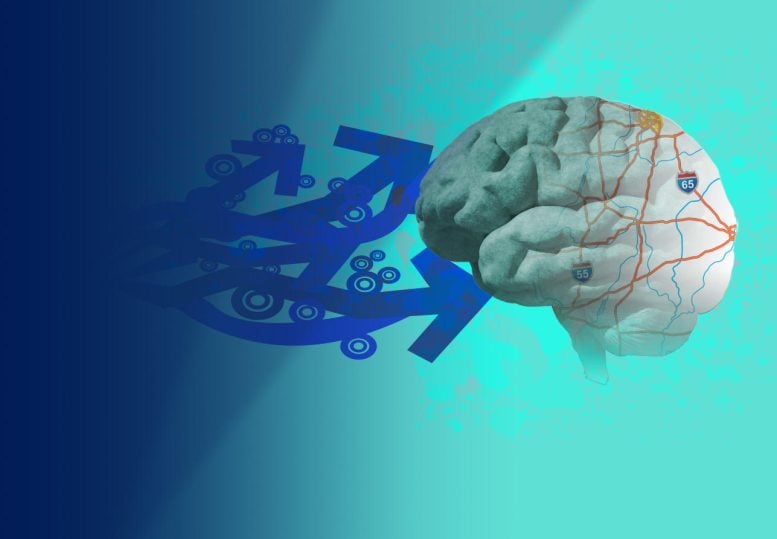Investigating The Link Between Brain Iron, ADHD, And Aging

Table of Contents
The Role of Iron in Brain Function
Iron is an essential mineral crucial for numerous brain functions. Its importance lies in its role in neurotransmitter production, energy metabolism, and myelination – the process that insulates nerve fibers and ensures efficient signal transmission. Understanding iron's role in these processes is key to understanding its potential impact on ADHD and aging.
- Iron's importance in dopamine and norepinephrine synthesis: These neurotransmitters are vital for attention, focus, and impulse control – functions often impaired in individuals with ADHD. Inadequate iron levels can compromise their synthesis.
- The impact of iron deficiency on cognitive function: Iron deficiency anemia, for example, can lead to significant cognitive impairments, including difficulty concentrating, memory problems, and reduced executive function. This highlights iron's critical role in maintaining optimal brain performance.
- The role of iron in brain development and aging: During brain development, iron is essential for neuronal growth and myelination. However, imbalances in iron homeostasis throughout life, including both deficiency and excess, can lead to neurodevelopmental issues and age-related cognitive decline. Maintaining healthy brain iron levels across the lifespan is crucial. This relates directly to terms such as "cerebral iron," "iron metabolism in the brain," and "iron homeostasis."
Brain Iron and ADHD
Emerging research suggests a potential link between elevated brain iron levels and the symptoms of ADHD. While the research is still in its early stages and more studies are needed to establish definitive causality, several studies have reported increased iron levels in specific brain regions of individuals with ADHD.
- Studies showing increased iron levels in specific brain regions in individuals with ADHD: These studies often focus on areas like the basal ganglia and prefrontal cortex, which are crucial for executive functions and attention regulation.
- Potential mechanisms linking iron dysregulation to ADHD symptoms: One proposed mechanism involves oxidative stress, where excess iron can contribute to the production of damaging free radicals, potentially harming brain cells and impairing function. Further research is needed to understand these processes fully.
- The need for further research to establish causality: While intriguing, the current research does not definitively prove that elevated brain iron causes ADHD. More research is needed to determine the precise nature and direction of the relationship between "ADHD and iron," particularly regarding "iron overload ADHD."
The Impact of Aging on Brain Iron
Brain iron levels change significantly with age. While iron is essential for healthy brain function throughout life, its accumulation in specific brain regions becomes a concern during aging. This accumulation of "aging brain iron," also referred to as "age-related brain iron deposition," can lead to various consequences.
- Age-related increase in brain iron deposition: This accumulation is particularly prominent in areas associated with cognitive functions, potentially contributing to age-related cognitive decline.
- The role of iron in age-related neurodegenerative diseases: Excessive iron deposition is implicated in the pathogenesis of several neurodegenerative diseases, including Alzheimer's and Parkinson's disease, further highlighting its significance in age-related brain health.
- The potential interaction between age-related iron accumulation and ADHD symptoms in older adults: This is an area requiring further investigation. It's possible that the age-related increase in brain iron could exacerbate or modify ADHD symptoms in older adults. Understanding the interplay between "iron accumulation in the aging brain" and ADHD is crucial.
Iron Chelation Therapy and its Potential
Iron chelation therapy is a treatment designed to remove excess iron from the body. Its potential application in managing excess brain iron and its implications for both ADHD and age-related cognitive decline are areas of growing interest.
- Mechanisms of iron chelation therapy: Chelation agents bind to iron, facilitating its excretion from the body. However, the ability of these agents to effectively remove iron from the brain is still being investigated.
- Potential benefits and risks: While promising, iron chelation therapy carries potential risks and side effects. More research is needed to understand its optimal application and minimize these risks.
- Ongoing clinical trials: Several clinical trials are currently underway to assess the efficacy and safety of iron chelation therapy for various neurological conditions, including those involving iron dysregulation. This area of research warrants close attention, especially regarding "iron chelation and ADHD" and "iron chelation aging brain."
Conclusion
The interplay between brain iron levels, ADHD, and aging is complex and requires further investigation. While research suggests a potential link between elevated brain iron and ADHD symptoms, and that iron accumulation worsens with age, more studies are needed to fully elucidate the relationship and determine the effectiveness of therapeutic interventions like iron chelation therapy. Learn more about the connection between brain iron and ADHD, investigate the impact of aging on brain iron levels, and consult your doctor about brain iron and your health, especially if you have concerns regarding ADHD or age-related cognitive decline. Understanding your brain iron levels and their implications for your health is a critical step towards maintaining optimal cognitive function throughout your lifespan.

Featured Posts
-
 Tragedy Strikes North Carolina University Shooting Results In Fatalities And Injuries
Apr 29, 2025
Tragedy Strikes North Carolina University Shooting Results In Fatalities And Injuries
Apr 29, 2025 -
 The China Factor Why Luxury Car Brands Like Bmw And Porsche Are Facing Headwinds
Apr 29, 2025
The China Factor Why Luxury Car Brands Like Bmw And Porsche Are Facing Headwinds
Apr 29, 2025 -
 Cardinal Maintains Voting Eligibility Despite Conviction
Apr 29, 2025
Cardinal Maintains Voting Eligibility Despite Conviction
Apr 29, 2025 -
 Anthony Edwards Injury Update Will He Play In Timberwolves Lakers Game
Apr 29, 2025
Anthony Edwards Injury Update Will He Play In Timberwolves Lakers Game
Apr 29, 2025 -
 The Likelihood Of A Fifth Champions League Spot For The Premier League
Apr 29, 2025
The Likelihood Of A Fifth Champions League Spot For The Premier League
Apr 29, 2025
Latest Posts
-
 Our Farm Next Doors Amanda Owen Family Photos And Rural Life
Apr 30, 2025
Our Farm Next Doors Amanda Owen Family Photos And Rural Life
Apr 30, 2025 -
 Watch Ru Pauls Drag Race Season 17 Episode 9 Free And Legal Streaming
Apr 30, 2025
Watch Ru Pauls Drag Race Season 17 Episode 9 Free And Legal Streaming
Apr 30, 2025 -
 How To Stream Ru Pauls Drag Race Season 17 Episode 9 For Free Legally
Apr 30, 2025
How To Stream Ru Pauls Drag Race Season 17 Episode 9 For Free Legally
Apr 30, 2025 -
 Where To Watch Ru Pauls Drag Race Season 17 Episode 9 Without Paying
Apr 30, 2025
Where To Watch Ru Pauls Drag Race Season 17 Episode 9 Without Paying
Apr 30, 2025 -
 Ru Pauls Drag Race Season 17 Episode 9 Free Online Viewing Options
Apr 30, 2025
Ru Pauls Drag Race Season 17 Episode 9 Free Online Viewing Options
Apr 30, 2025
